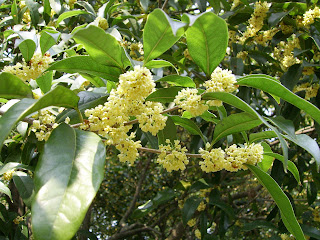
Just apply plenty of water to your tree throughout most of the year and especially during the growing season and summer months. The best time to fertilize the camellia is after it has finished flowering. Also a second application should also be made to it during the later part of the summer. The best time to repot the plant is after it has finished flowering and it's probably best to do this every 2-3 years. Use an acidic soil when doing this as the camellia grows most healthily in this environment.
Finally there are some pests you need to look for. Vine weevils are a problem during the repotting season so take special care during this time, especially during the spring months. Greenfly and aphids can be a real pain and you can normally spot them with your own eyes and pick them off with your own hands. You also might have them if you start noticing ants on your plant. If they become a major problem get a can of insecticide and spray your tree gently.
The high content of these two substances contribute to the penetrative power of camellia seed oil capable of permeating deeply into the lower layers of the skin to significantly enhance the beneficial effects of elastin and collagen, thus restoring the skins elasticity and considerably improves skin texture by the elimination of fine lines and small wrinkles.
Since camellia seed oil is very similar to skin oil, it works in synergy with skins own natural system to nourish cell membranes and accelerate skin rejuvenation. Human skin will not reject these substances thus boosting its ability to utilize them and hence replenish itself, restoring moisture balance to dry skin, softens wrinkles and tiny age lines and reduces and heals scars.
Camellia shrubs and trees prefer light or heavy shade for growing, and pine trees or flowering magnolia trees are the perfect companion plants for the Camellia shrub. Full sun will burn the leaves of a Camellia shrub except for interior leaves and no one wants a plant looking like that in a landscape garden. The discovery of the plant hormone, gibberellic acid, with its accelerative growth effect on individual flowers of the Camellia became an important method of winning prizes at Camellia flower shows. A normal Camellia flower, teacup size, could be treated with a drop of gibberellic acid at an inferior (lower) bud, and the teacup size flower would continue to grow to the size of a dinner plate. This treatment process has become important in treating other plant products to increase growth size of flowers, fruits, leaves, and in rooting hormone mixtures and seed germination.
A unique characteristic of both the Camellia japonica and Camellia sasanqua is the beautiful and spectacular bloom-drop circle that forms beneath the tree, surrounding the plant after older flowers fall and shatter on the ground. The glow of the fallen petals in the circle increases as the season progresses and many gardener's view the bloom-drop circle as fanciful and beautiful as the fresh flowers remaining on the tree. The Camellia Sasanqua is often and commonly called simply, Sasanqua. The Sasanqua flower colors of red, white, pink, purple, and peppermint are the same colors, but smaller than the Camellia japonica blooms. The Camellia Sasanqua can grow 16 feet tall and blooms earlier (October to March) than Camellia japonica. The leaves are a glowing waxy green and evergreen with a slight curving habit. Single red, white, or pink flowers of Sasanqua are preferred by most buyers, but double flowering Sasanqua is stunning when in full bloom. The Sasanqua provides a perfect specimen landscape plant that will tolerate full sun, and is most often used in Zone 6-9 as a privacy hedge for screening out noisy neighbors.


